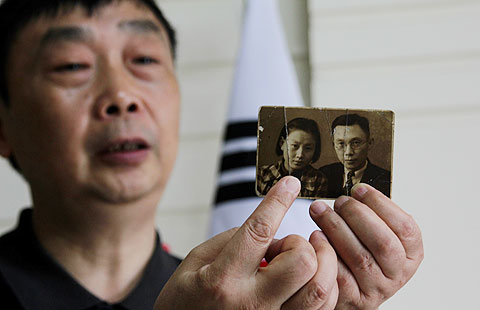Pants found in Xinjiang date back 3,300 years
By Cang Wei (China Daily) Updated: 2014-06-06 09:15A pair of 3,300-year-old trousers, stripped from a mummy recently unearthed in Turpan, Xinjiang Uygur autonomous region, might be some of the oldest in the world, archaeologists said.
The centuries-old pants, found in May, were made of three pieces of cloth, two for legs and one for the crotch. They had woven patterns for decoration.
Lu Enguo, a researcher at the Institute of Archaeology in Xinjiang, said the research team believes the trousers are the oldest pair with a crotch ever found in China. Prior discoveries were simply two legs that tied together at the waist, like chaps.
"Archaeologists also stripped another pair of trousers from a mummy in another tomb," said Lu. "They were almost of the same shape as today's trousers."
The two mummies, both identified as male shamans in their 40s, were unearthed in the Yanghai cemetery in Shanshan county.
A team of experts from Germany and China is working together to repair and preserve the two pairs of pants, now kept in the technological protection institute of the Academy of Turpan Studies.
Xu Dongliang, deputy head of the institute, said the pants are not the first pair to be discovered in China.
A pair discovered in Xiaohe cemetery in Lop Nor, Xinjiang, dates back 4,000 years, and another found in Wupu cemetery in Hami are believed to be 3,500 to 4,000 years old, he added. But neither pair has a crotch.
"The nomads in Xinjiang at first wore a kind of trousers that only had two legs," Xu said. "They fastened the two legs to the waist with strings. Later, crotches were sewed on to the legs, and gradually other styles, such as bloomers, appeared."
Archaeologists believe that the nomads invented trousers for horse riding, which dates back nearly 4,000 years.
Previously, the oldest pants with a crotch that were discovered went back just 2,800 years. They were uncovered at Zhagunluke tomb in Qiemou county and are now being kept by the Xinjiang Museum.
"Both trousers and another coat stripped from the shaman were made of animal fur," Xu said. "More than 10 other mummies and some ancient weapons, including an ax and a bow, were also unearthed from the tombs."
Discovered by local farmers accidentally in the 1980s, Yanghai is Xinjiang's biggest cemetery, covering an area of 54,000 square meters. It has about 1,500 tombs.
About 500 have been excavated by archaeologists, while around 20 had already been visited by thieves.
"Many of the relics unearthed in the Yanghai tombs, including artifacts made of gold, musical instruments and clothes, are of great value," Xu said.
Gao Bo in Urumqi contributed to this story.
Contact the writer at cangwei@chinadaily.com.cn
- US cybersecurity gripes hypocritical:China
- Creativity advances as patent filings rise
- 52 websites probed for publication of porn, violence
- Homecoming set for 'king' of ancient bronze wine vessels
- Nine terrorists face death in Xinjiang
- 29 arrested in anti-terror crackdown
- Silk Road should be focus of relations
- Naval drill may calm choppy ties with the US
- Oversight of military firms on rise
- Petition asks McDonald's to strengthen security







